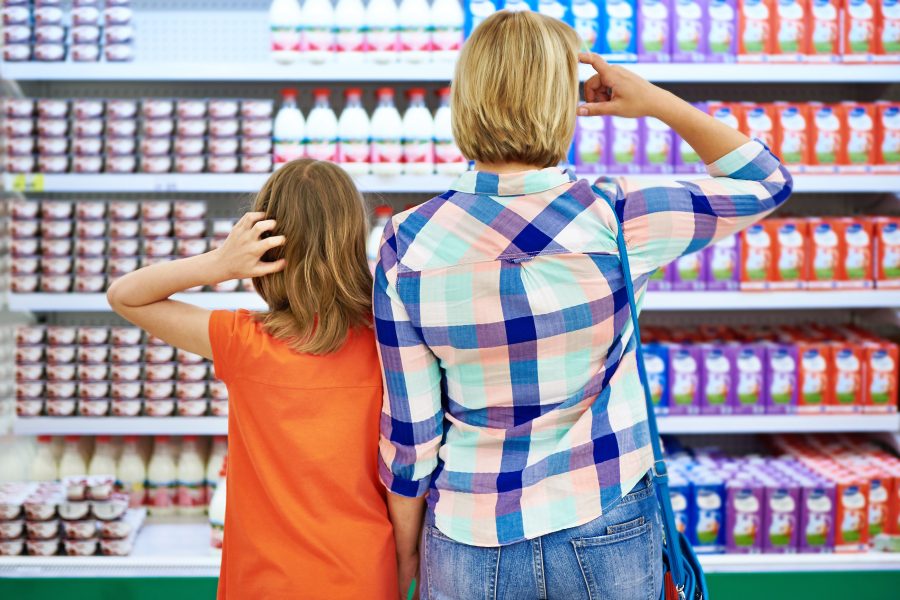How to Choose Packaging for a Product
Customized Solutions for Diverse Markets
Since 1942, Maco PKG has earned a reputation as a supplier to multiple industries with quality pouches at competitive prices. In order to help you know how to choose packaging for a product, we offer our customers a diverse solution set for custom manufacturing of all types of bags and pouches.
Our contract packaging services apply to beverages, liquid products, and dry food. Fueled by an engaged family/employee ownership, Maco specializes in enthusiastic and proactive support to all aspects of the packaging process. We’re located in Newark, New York and operate a modern, 250,000 square foot facility. We provide samples to ensure that we cover all the details in your project, and you are always welcome to come and tour our facility.

Getting Started
Custom Packaging Questionnaire
We know that packaging can be very complex.
To guarantee top-quality results and excellent customer service, we need a bit of information upfront to streamline the quoting process. Please help us by filling out this questionnaire.
One of our experts will be in touch to answer any questions and help you pick the perfect packaging for your product.
Frequently Asked Questions
What is flexible packaging?
Flexible packaging is non-rigid packaging structures used to package and protect various food and nonfood products in the retail and industrial business forum. Snacks and frozen foods, medical appliances, beverages, pet food, etc., are a sampling of products packaged in this medium.
What is converting?
Converting is simply changing something into a different form. In the case of flexible packaging, converting would be the process of forming films, foils and resins into a multi-layer structure through the process of lamination.
What is LLDPE and how does it differ from LDPE?
LLDPE stands for linear low-density polyethylene and is a substantially linear polymer (polyethylene). LLDPE has higher tensile strength and higher impact and puncture resistance than LDPE. It is very flexible and elongates under stress. It can be used to make thinner films, with better environmental stress cracking resistance. It has good resistance to chemicals and to ultraviolet radiation.
What is MVTR and OTR?
MVTR stands for moisture vapor transmission rate, or the rate at which water vapor passes through a substance. OTR is Oxygen Transmission Rate, or the rate at which oxygen passes through a substance.
What is M?
M stands for thousand
What is MSI?
MSI stands for Thousand Square Inches.
What is the difference between extrusion coating and adhesive coating?
Extrusion coating is the coating of a molten web of synthetic resin on to a substrate material. The actual process of extrusion coating involves extruding resin from a slot die at temperatures up to 610°F/320°C directly onto the moving web which is then passed through a nip consisting of a rubber covered pressure roller and a chrome plated cooling roll. The latter cools the molten film back into the solid state and also imparts the desired finish to the plastic surface. Adhesive coating is the coating of an adhesive (a mixture in a liquid or semi-liquid state that adheres or bonds items together) to a substrate material.
What is reverse printing?
Reverse printing is the process of printing on the back side of a clear substrate, sometimes referred to as subsurface printing, with a reverse image. In the process of manufacturing flexible packaging the print will be buried between the outside substrate and the rest of the structure, offering scuff and chemical resistance. When the outer substrate is mounted to the remainder of the structure, it will be right reading.
What is the difference between flexographic printing and rotogravure printing?
Flexographic printing is the method of printing on a web press using rubber or photopolymer plates with raised images. Rotogravure printing does not use plates, rather the image is etched directly onto a cylinder. It can be distinguished when looking through a loop – it has teeth like marks around type and solids.
Flexible Equals…
- Innovative
- Maintains Freshness
- Offers Consumer Conveniences
- Provides Reclosure and Dispensing Options
- Easily Transported and Stored
- Creates Shelf Appeal
- Enables Visibility of Contents Provides
- Uses Less Energy Creates
- Fewer Emissions
- Creates Less Waste
- Widely Extensible Into Diverse Product Categories
Abbreviations
- coex = co extrusion (multiple layers extruded at the same time)
- met = metalized (as in metalized polyester)
- adh = adhesive (holds the laminated structures together)
- PE = polyethylene
- LDPE = low density polyethylene
- HDPE = high density polyethylene
- LLDPE = linear low density polyethylene
- PET = polyester
- OPP = oriented polypropylene
- BOPP = biaxial oriented polypropylene
- AOH = acrylic alcohol coating *
- PVOH = polyvinyl alcohol coating *
- EVOH PE = ethylene vinyl alcohol polyethylene resin
* a coating applied to film – verses extruded resin, blend of resins, or a coex.
Examples
Examples are not limited to these structures:
Coffee
MET PET/ LLDPE
PET / FOIL/LLDPE
Bakery
OPP/ LLDPE
MET OPP/OPP
Snack Foods – Salted
OPP /OPP
MET OPP/OPPPET/LLDPE
Flour & Mixes
PET/LLDPE
Liquid or Gel Products
PET/ LLDPE
PET/MET PET/ LLDPE
PET/FOIL/LLDPE
Medical
PET/FOIL/LLDPE
TYVEK
Frozen Foods
PET/ LLDPE
Spices
PET/LLDPE
Nuts
PET / LLDPE
OPP / EVOH PE
